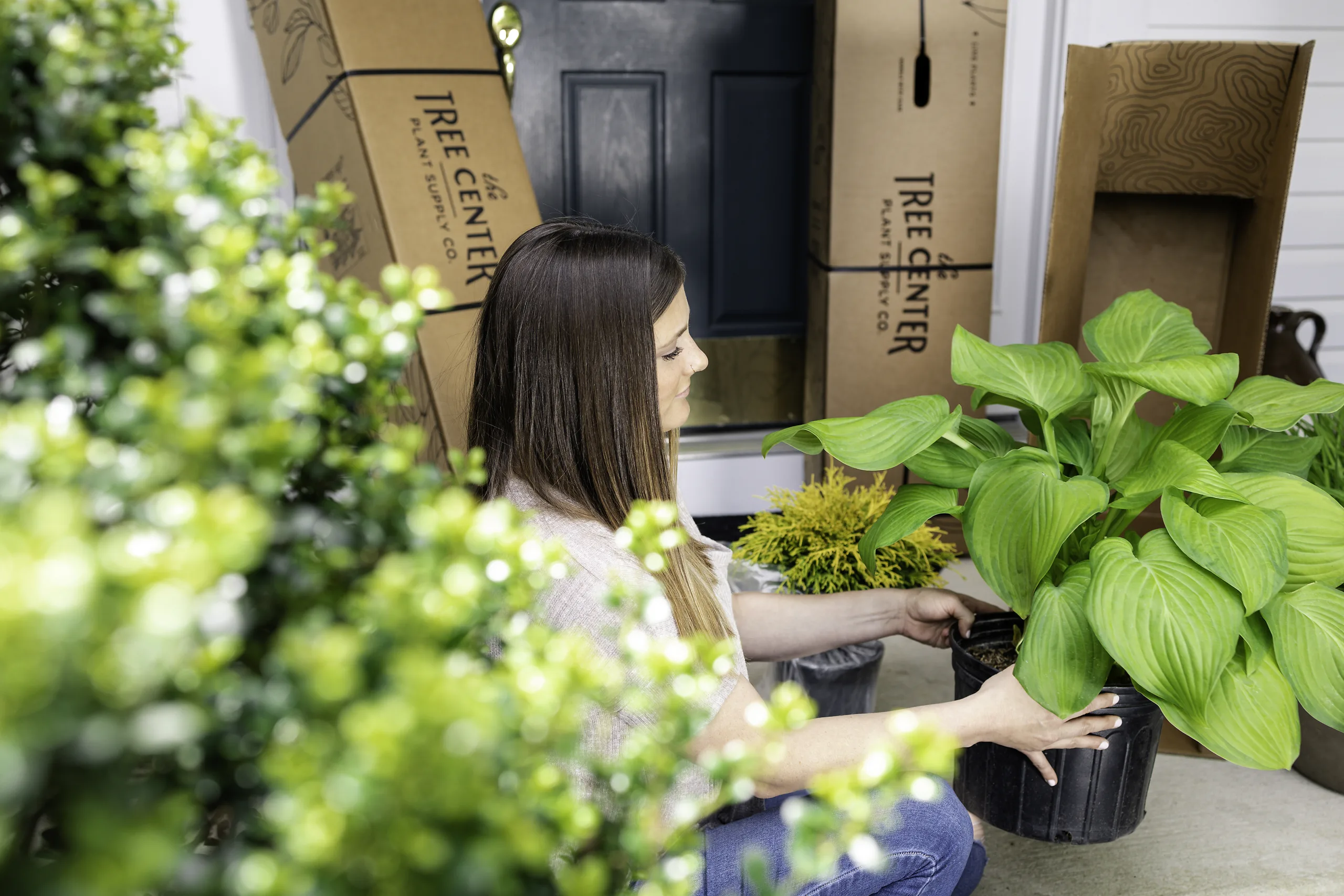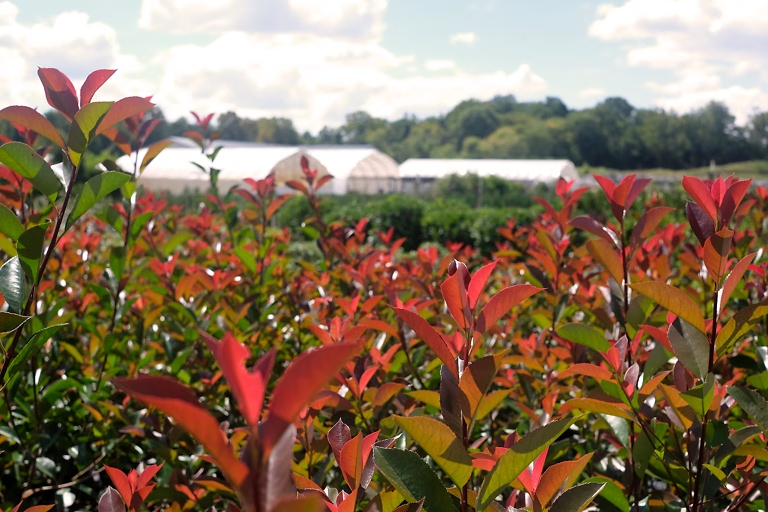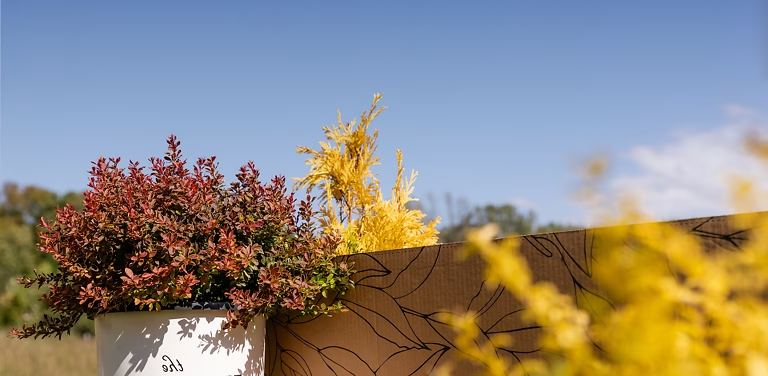
Written by s • 4 New Year Resolutions for Your Garden
The end of the year is a traditional time to review where you are in your life, and make resolutions for doing better in the coming year. Yes, I know, that diet and exercise plan didn’t go far last year, but maybe you did succeed in giving a little more to your favorite charity, and certainly you kept the one about being more loving towards those around you. Like it says in the cartoon, we shouldn’t take resolutions to seriously, but if you make reasonably ones, like these for your garden, they are easy to take seriously, and deliver great results.
Four Great Resolutions Guaranteed to Give You a Better Garden
- Resolve to Start Your Gardening Year in September, not April
- Resolve to Have Plants in Bloom Every Month
- Resolve to Grow More Native Plants
- Resolve to Choose Water-wise Plants
The old nursery rhyme asks, “Mary, Mary, quite contrary, how does your garden grow?”, and that’s a good question to ask yourself about your own garden at this time, because, hey, we all want better gardens, right? So instead of concentrating your resolutions this year on changing yourself – always the hardest task of all – let’s look at ways you can change your garden for the better. A much easier task, and if it puts you out in your garden more, it is also going to be a good resolution, with positive results, for your body and soul.
Resolve to Start Your Gardening Year in September, not April
Spring fever is a real thing – ask any garden center – and we all feel that urge to rush out and plant. Trouble is, it isn’t actually the best time to start thinking about your garden for the year – the previous September is. So resolve that Labor Day, 2023, will be when you begin work for your 2024 garden. You will be amazed at the benefits. Fall is a better planting season for just about all plants, and the time when bargains are around too. You can save yourself money, and have time in spring for other things, if you shop in fall and get your shrubs, trees and perennials in the ground by late September.
There are a few exceptions, and people in zone 4 should be careful with some evergreens. Shrubs like lavender and butterfly bushes (Buddleja), and perennials like Russian sage (Perovskia) are better planted in spring, but for all the more common plants, go ahead with no worries.
Fall is also the time to buy and plant bulbs. Even if your garden is built around shrubs and perennials, bulbs like daffodils, tulip, grape hyacinth and other hardy bulbs need planting in fall, and it’s no good looking for them when you see them in all their glory in your neighborhood. They need many weeks in the cold ground to root and prepare their flower buds. Add a few more each fall – keep a plan of where you already planted them to keep track – and your early spring garden will always be special.
Learn more about this in some of our other blogs, like, Fall, the Ideal Planting Season, or Is it Too Late for Fall Planting?
Resolve to Have Plants in Bloom Every Month
OK, depending on where you live, perhaps not every month, but ‘almost’ is possible almost everywhere. Succession planning might be something you do with your will, but it’s also a way of keeping your garden in bloom for month after month. Make a list of each month of the year, and write in it what you already have in bloom at that time in your garden. Take a look, and I am betting that like most gardens, yours is big on blooms in April, May and June, and after that not so much. Make a conscious effort to seek out plants for the summer – hydrangeas are a good place to start – and look for very early blooming plants too. Fall and winter can be easy in warmer areas, with camellias top of the list, but of course harder in cooler zones. Those camellias, though, grow really well and easily in pots, and if you have a cool porch that is well-lit and doesn’t freeze, you can have those in bloom in winter anywhere in the country.
Think foliage too, and look for plants that have bright new leaves, or good fall color, as that can be almost as good as having blooms. Fruit and berries are also a great way to have a colorful and interesting fall garden. Even if you can’t fill every month, you will surprise yourself when you make this a conscious project and your neighbors say, “Wow, your garden is always in bloom, how do you do it?”
Resolve to Grow More Native Plants
North America has one of the most diverse collections of native plants on the planet. When it was discovered, and plants first sent to Europe, those people certainly realized this, and it’s ironic that our natives are often better appreciated and more widely-grown in England and Europe than they are at home. You don’t have to be a purist and only grow plants that are exactly the same as those in the wild. No, many years of breeding has given us improved forms, and the smart gardener takes advantages of everything available.
You plant a section of your garden as a prairie, with cone flowers, black-eyed Susan, different varieties if our beautiful native grasses, butterfly weed, and other perennials, varied with perhaps some eastern red cedar (Juniperus virginiana) for height and accent.
You could add some of our beautiful woodland plants, from trees to bulbs, to an existing area of woodland on your property, and create an enchanting place to walk through. Make a simple start with some of our native Ferns in shady, damp spots, and put creeping phlox in sunny gaps. Plant dogwoods, both red-twigs shrubby types and flowering trees, to enrich an area and make it more like a garden. There are native American Rhododendrons you could grow too, like ‘Roseum Elegans’, a variety of our native Rhodondron catawbiense. You can stick just to native species, or add some plants from China and Japan, which often enjoy woodlands. It is an amazing fact that once western America was joined to China and Japan, and we share many closely-related plants – for example among the dogwoods, where Asian dogwoods are very similar, but easier to grow, than our native species.
Resolve to Choose Water-wise Plants
A big issue in many parts of the country – and one predicted to only become worse – is water. Perhaps its time we unplugged our irrigation systems, or at least limited them to some areas of the garden, and planted most if it with tougher, drought-tolerant plants. Our planet already has places that are very dry in summer, where plants grow mostly in fall and spring. These Mediterranean climates are found around that ocean, or course, but also in parts of Australia, South Africa and in California. Plants in these climates have adapted over millions of years to survive long, dry summers, without water.
Garden plants from these areas – and there are many – are great choices if you garden where summers are long, hot and dry, and winters not too cold. These are often also the parts of the country where water is the biggest issue. Stay ahead of a future where watering your garden could be heavily restricted, and plant these water-wise plants.
Think junipers, both spreading and upright, figs and olive trees, maybe even oranges and lemons if you are in zones 9 and 10, and of course plants like Lavender, Oleanders, and familiar screening plants like cherry laurels (Prunus laurocerasus). Include ornamental grasses too, which are often much tougher than your lawn when it comes to summer drought.







